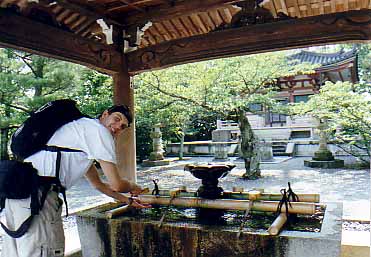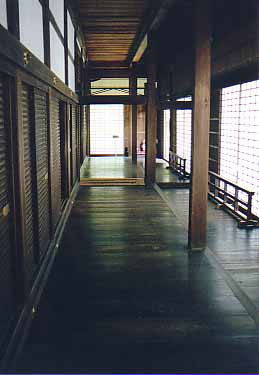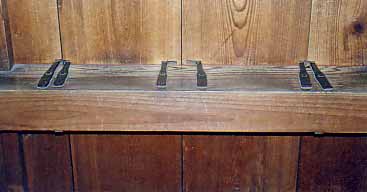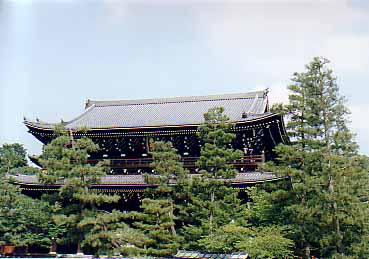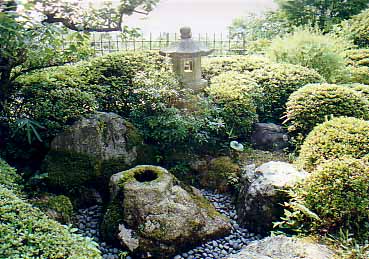
| Main Page |
| Photo Galleries |
| Writing |
| Aikido |
| Zen |
| Peeps |
| Links |
| Contact |
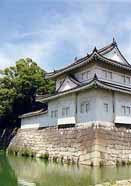
Chion-In
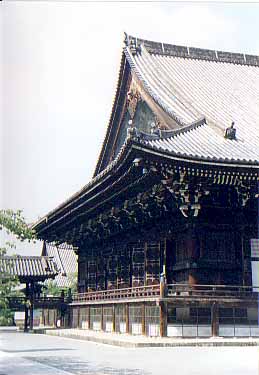 Chion-in
is considered an extremely important cultural
treasure by the Japanese people, and is the
centre of the Pure Land Buddhist sect. Tucked
away on its impressive and mountainous grounds
near Kyoto's Gion district, Chion-in is made
up of a large number of outbuildings, guesthouses
and belltowers.
Chion-in
is considered an extremely important cultural
treasure by the Japanese people, and is the
centre of the Pure Land Buddhist sect. Tucked
away on its impressive and mountainous grounds
near Kyoto's Gion district, Chion-in is made
up of a large number of outbuildings, guesthouses
and belltowers.
The main hall, shown to the right, is a massive wooden structure at the centre of the temple grounds. What I find most interesting about this, and many sites like it in Japan, is that it is still in use. This hall is actively used as a place of worship for all Pure Land adherents.
Pure Land was founded by Honen (1133-1212), who - as the information pamphlets so eloquently put it - "closed his life" here in Chion-in. His grave is located within the temple grounds. The temple itself was built after his death by one of his disciples.
|
How culturally sensitive: washing my hands before entering the temple...at least I hope that's what this was for! Considering it was 36 degrees, Laura and I wanted to plunge our heads in. |
One of the highlights of this temple for me was the Uguisubari-no-roka (Tom points out that the closest translation he could come up with is not 'the hall of something-or-other' as I had said, but is instead closer to 'the hall of nightingale abuse' This seems fitting given the noises that emanate from the floorboards).
This entire hallway was designed to foil stealthy intruders by squeeking like a nightingale when you walk down it.
|
Nightingale Hallway...designed to foil nighttime attackers back in the Tokugawa days. A slightly more elaborate version of the Chubb alarm system. |
It really is very impressive, and as you walk down the hall - no matter how softly - the floorboards do indeed sing like birds. There seemed to be no obvious way of telling which floorboards would sing, as none of them were visibly loose.
After watching me for ten minutes making an ass of myself, feigning ninja moves and trying to figure out how it works, the guard there took pity on me and explained.
Each floorboard has a series of iron hooks attached to their undersides, which are then attached to the floor joists with deliberately loose iron nails. Any pressure on the floorboards causes a slight movement in the iron, causing each step to 'sing'.
Visitors to Chion-in are welcomed to the temple grounds by a massive gateway which
|
The iron hooks underneath the floorboards are kept deliberately loose in order to ensure the perfect amount of squeekiness...an exacting art form, I'm sure. |
serves as a fitting introduction to this impressive complex of buildings. The gateway is said to contain the remains of the designer in charge of building the temple. This unfortunate individual, and his wife, took their own lives as a form of dramatic apology for going overbudget on construction (a concept which, although clearly extreme, should perhaps be reintroduced in Hollywood studios).
These gates, along with the Nightingale Hallway, give an interesting peak into the not-so-rosy past of Japan, which for centuries was full of war and strife.
|
The main gates to Chion-in looming over the treetops. All this stately splendour comes at a price, though; the once famed designer of the temple committed suicide when the project ran overbudget. |
The temple, in places, feels somewhat like a fortress, and these gates give the immediate impression of having been built with defence in mind.
But Japanese traditional structures always seem to thrive on contrast, and the looming, imposing structures found throughout the compound are softened by the serene gardens spread throughout. As always, entering the grounds of these sites often gives one the impression of having been transported far away from outside distractions and concerns - perhaps a telling microcosm of Japan itself.
|
Atop the mountain, still within the temple grounds, a small teahouse looks over this tiny garden which is itself framed by a panoramic view of the city in the valley below. |
